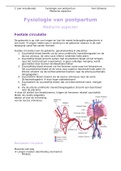ANNALS OF MEDICINE
2021, VOL. 53, NO. 1, 274–285
https://doi.org/10.1080/07853890.2020.1867323
PRIMARY CARE
Questions and answers on iron deficiency treatment selection and the use
of intravenous iron in routine clinical practice
Toby Richardsa , Christian Breymannb, Matthew J. Brookesc,d, Stefan Lindgrene, Iain C. Macdougallf,
Lawrence P. McMahong, Malcolm G. Munroh,i, Elizabeta Nemethj, Giuseppe M. C. Rosanok, Ingolf Schiefkel
€nter Weissm,n
and Gu
a
Faculty of Health and Medical Sciences, University of Western Australia, Perth, Australia; bObstetric Research-Feto Maternal
Haematology Unit, University Hospital Zurich, Zurich, Switzerland; cGastroenterology Unit, Royal Wolverhampton NHS Trust,
Wolverhampton, UK; dResearch Institute in Healthcare Science (RIHS), University of Wolverhampton, Wolverhampton, UK; eDepartment
of Gastroenterology and Hepatology, Lund University, Skåne University Hospital, Malm€o, Sweden; fDepartment of Renal Medicine, King’s
College Hospital, London, UK; gDepartments of Renal Medicine and Obstetric Medicine, Eastern Health Clinical School, Monash
University, Melbourne, Australia; hDepartment of Obstetrics and Gynecology, David Geffen School of Medicine, University of California,
Los Angeles, CA, USA; iDepartment of Obstetrics and Gynecology, Kaiser-Permanente, Los Angeles Medical Center, Los Angeles, CA, USA;
j
Center for Iron Disorders, David Geffen School of Medicine, University of California, Los Angeles, CA, USA; kDepartment of Medical
Sciences, IRCCS San Raffaele, Roma, Italy; lDepartment of Gastroenterology, Hepatology, Diabetology and Endocrinology, Klinikum St.
Georg, Leipzig, Germany; mDepartment of Internal Medicine II, Medical University Innsbruck, Innsbruck, Austria; nChristian Doppler
Laboratory for Iron Metabolism and Anemia Research, University of Innsbruck, Innsbruck, Austria
ABSTRACT ARTICLE HISTORY
Iron deficiency is a common cause of morbidity and can arise as a consequence or complication Received 24 September 2020
from many diseases. The use of intravenous iron has increased significantly in the last decade, Revised 3 December 2020
but concerns remain about indications and administration. Modern intravenous iron prepara- Accepted 15 December 2020
tions can facilitate rapid iron repletion in one or two doses, both for absolute iron deficiency
KEYWORDS
and, in the presence of inflammation, functional iron deficiency, where oral iron therapy is inef- Anaemia; iron-deficiency;
fective or has not worked. A multidisciplinary team of experts experienced in iron deficiency cardiovascular diseases;
undertook a consensus review to support healthcare professionals with practical advice on man- erythrocyte transfusion;
aging iron deficiency in gastrointestinal, renal and cardiac disease, as well as; pregnancy, heavy inflammatory bowel
menstrual bleeding, and surgery. We explain how intravenous iron may work where oral iron diseases; infusions;
has not. We provide context on how and when intravenous iron should be administered, and intravenous; iron;
informed opinion on potential benefits balanced with potential side-effects. We propose how menorrhagia; renal
intravenous iron side-effects can be anticipated in terms of what they may be and when they insufficiency; chronic;
may occur. The aim of this consensus is to provide a practical basis for educating and preparing pregnancy complications
staff and patients on when and how iron infusions can be administered safely and efficiently.
KEY MESSAGES
� Iron deficiency treatment selection is driven by several factors, including the presence of
inflammation, the time available for iron replenishment, and the anticipated risk of side-
effects or intolerance.
� Intravenous iron preparations are indicated for the treatment of iron deficiency when oral
preparations are ineffective or cannot be used, and therefore have applicability in a wide
range of clinical contexts, including chronic inflammatory conditions, perioperative settings,
and disorders associated with chronic blood loss.
� Adverse events occurring with intravenous iron can be anticipated according to when they
typically occur, which provides a basis for educating and preparing staff and patients on how
iron infusions can be administered safely and efficiently.
Introduction impact of iron deficiency on clinical outcomes and
The use of intravenous iron has grown substantially in quality of life. Current intravenous iron preparations
the past decade due to heightened awareness of the are indicated for the treatment of iron deficiency
CONTACT Toby Richards toby.richards@uwa.edu.au Faculty of Health and Medical Sciences, The University of Western Australia (M581), 35
Stirling Highway, Perth, 6009, Australia
This article has been republished with minor changes. These changes do not impact the academic content of the article.
ß 2021 The Author(s). Published by Informa UK Limited, trading as Taylor & Francis Group
This is an Open Access article distributed under the terms of the Creative Commons Attribution License (http://creativecommons.org/licenses/by/4.0/), which permits
unrestricted use, distribution, and reproduction in any medium, provided the original work is properly cited.
, ANNALS OF MEDICINE 275
when oral preparations are ineffective or cannot be however, occur only when iron storage has been
used [1]. They have a wide range of applicability in largely depleted.
clinical contexts including; nutritional deficiency, mal- Functional iron deficiency describes a state of
absorption, disorders associated with chronic blood impaired iron mobilization that arises in conditions
loss, and chronic inflammatory conditions [2–5]. The associated with inflammation, infection or chronic dis-
availability of modern preparations allows rapid iron ease, where the normal pathways of iron transport
repletion in just one or two doses facilitating ease of and iron metabolism are disrupted [11,12]. In these
treatment [6,7]. settings, cytokines, particularly IL6, upregulate the
Intravenous iron preparations are approved with master regulator of iron homeostasis, hepcidin.
broad labels and the clinical trials testing efficacy span Increased hepcidin (normally seen in response to iron
many indications and disease groups, this has led to a loading) leads to reduced dietary iron absorption and
proliferation of guidelines and consensus statements. failure of cellular iron export into plasma, with reten-
However, there remains a need for more practical tion of iron within macrophages. Consequently, this
“how to” guidance on intravenous iron administration reduces circulating levels of iron and its availability for
as patients and staff may express concerns over erythropoiesis despite the presence of adequate
potential side-effects, adverse events, reactions and iron stores.
complications, or contra-indications, which may be
confused or misperceived. What is the difference between iron deficiency
Here, we aim to support healthcare professionals anaemia and anaemia of chronic disease?
by summarizing the current recommendations for
Definitions of iron deficiency are frequently inconsist-
intravenous iron, alongside practical advice on their
ent because absolute and functional iron deficiency
administration and informed opinion on the antici-
are often used interchangeably. Absolute iron defi-
pated risks versus expected benefits of treatment.
ciency is commonly defined by reduced ferritin levels
(<30 mg/L), with low circulating iron and reduced
What is iron deficiency? binding of iron to the transport protein transferrin, as
measured by low transferrin saturation (TSAT;
Iron is an essential trace mineral that plays a role in
<20%)[12]. Prolonged absolute iron deficiency leads
vital organismal and cellular processes including (but
to the emergence of iron deficiency anaemia (IDA),
not limited to) the transport of oxygen by haemoglo-
defined according to World Health Organization
bin (Hb), mitochondrial energy metabolism, and a
(WHO) criteria as Hb <120 g/L in women (<110 g/L in
large number of enzymatic processes across multiple pregnant women) and <130 g/L in men (although
tissue sites [8,9]. Prolonged iron deficiency restricts Hb these levels represent lower limits of normal Hb –
synthesis in the marrow and results in iron deficiency levels are typically much higher in healthy individuals).
anaemia. In addition to affecting erythropoiesis, iron IDA is typically characterized by microcytic and hypo-
deficiency also influences the function of other cells chromic erythrocytes [11,13].
and tissues, impairing myocardium and skeletal Functional iron deficiency is defined by low circulat-
muscle, the immune system (and T-cell activity in par- ing iron levels and TSAT <20% but with normal or
ticular), as well as cognitive and neuronal develop- increased serum ferritin levels (>100 mg/L) along with
ment [10]. systemic markers of inflammation (C-reactive protein
“Absolute” or “true” iron deficiency develops as a [CRP] and interleukin 6 [IL-6]) [12]. Over time, the pres-
result of an imbalance between iron uptake, iron util- ence of functional iron deficiency and the additional
ization and iron loss [11]. This may occur due to acute effects of immune mediators on erythropoiesis lead to
or chronic blood loss, sustained limitation in dietary the development of anaemia of chronic disease (some-
iron absorption, or because of inadequate iron supply times also referred to as anaemia of inflammation),
during periods with increased iron requirements which is mostly normochromic and normocytic [12].
(e.g. rapid growth, pregnancy, and erythropoiesis-stim- Absolute iron deficiency is the most common cause
ulating therapy). Absolute iron deficiency is manifest for anaemia worldwide due to low nutritional iron
as a decrease in total body iron, primarily evident in intake or excess blood loss. Functional iron deficiency
decreased iron stores in the liver and spleen, as is the second most common cause for anaemia world-
reflected in low serum levels of the iron storage pro- wide and is often found in patients suffering from
tein, ferritin. The changes in serum ferritin levels, infections, autoimmune diseases, cancer, congestive





